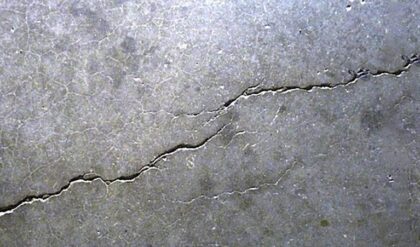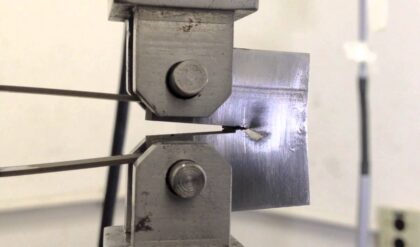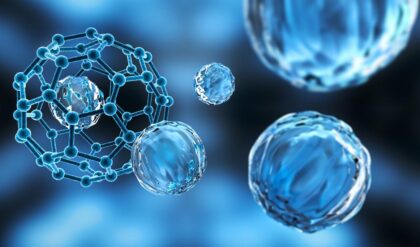Thermosetting plastics (thermosets) are polymer materials that cure, through the addition of energy, to a stronger form. The energy may be in the form of heat (generally above 200 degrees
Celsius), through a chemical reaction (two-part epoxy, for example), or irradiation.
Thermoset materials are usually liquid, powder, or malleable prior to curing, and designed to be
molded into their final form, or used as adhesives.
The curing process transforms the resin into a plastic or rubber by a cross-linking process. Energy and/or catalysts are added that cause the molecular chains to react at chemically active sites (unsaturated or epoxy sites, for example), linking into a rigid, 3-D structure. The cross- linking process forms a molecule with a larger molecular weight, resulting in a material with a higher melting point. During the reaction, when the molecular weight has increased to a point so that the melting point is higher than the surrounding ambient temperature, the material forms into a solid material. Subsequent uncontrolled reheating of the material results in reaching the decomposition temperature before the melting point is obtained. A thermoset material cannot be melted and re-shaped after it is cured.

Thermoset materials are generally stronger than thermoplastic materials due to this 3-D network of bonds, and are also better suited to high-temperature applications up to the decomposition temperature of the material. They do not lend themselves to recycling like thermoplastics
Bakelite, a Phenol Formaldehyde Resin (used in electrical insulators and plastic wear)
Urea-formaldehyde foam (used in plywood, particleboard and medium-density fibreboard)
Melamine (used on worktop surfaces)
Polyester Resin (used in glass-reinforced plastics/fibreglass (GRP))
Epoxy Resin (used as an adhesive and in fibre reinforced plastics such as glass reinforced plastic
and graphite-reinforced plastic)
A thermoplastic is a material that is plastic or deformable, melts to a liquid when heated and freezes to a brittle, glassy state when cooled sufficiently. Most thermoplastics are high molecular weight polymers whose chains associate through weak van der Waals forces (polyethylene); stronger dipole-dipole interactions and hydrogen bonding (nylon); or even stacking of aromatic rings (polystyrene). Thermoplastic polymers differ from thermosetting polymers (Bakelite; vulcanized rubber) which once formed and cured, can never be remelted and remolded. Many thermoplastic materials are addition polymers; e.g., vinyl chain-growth polymers such as
polyethylene and polypropylene.
Thermoplastics are elastic and flexible above a glass transition temperature Tg, specific for each one — the midpoint of a temperature range in contrast to the sharp freezing point of a pure crystalline substance like water. Below a second, higher melting temperature, Tm, also the midpoint of a range, most thermoplastics have crystalline regions alternating with amorphous regions in which the chains approximate random coils. The amorphous regions contribute elasticity and the crystalline regions contribute strength and rigidity, as is also the case for non- thermoplastic fibrous proteins such as silk. (Elasticity does not mean they are particularly stretchy; e.g., nylon rope and fishing line.) Above Tm all crystalline structure disappears and the chains become randomly interdispersed. As the temperature increases above Tm, viscosity gradually decreases without any distinct phase change.
Thermoplastics can go through melting/freezing cycles repeatedly and the fact that they can be reshaped upon reheating gives them their name. Animal horn, made of the protein α-keratin, softens on heating, is somewhat reshapable, and may be regarded as a natural, quasi-
thermoplastic material.
Thermoplastics are useful between Tg and Tm, a temperature range in which most are neither brittle nor liquid. If a plastic with otherwise desirable properties has too high a Tg, it can often be lowered by adding a low-molecular-weight plasticizer to the melt before forming (Plastics extrusion; molding) and cooling. A similar result can sometimes be achieved by adding non- reactive side chains to the monomers before polymerization. Both methods make the polymer chains stand off a bit from one another. Before the introduction of plasticizers, plastic automobile parts often cracked in cold winter weather. Another method of lowering Tg (or raising Tm) is to incorporate the original plastic into a copolymer, as with graft copolymers of polystyrene, or into
a composite material.
Although modestly vulcanized natural and synthetic rubbers are stretchy, they are elastomeric thermosets, not thermoplastics. Each has its own Tg, and will crack and shatter when cold enough so that the cross linked polymer chains can no longer move relative to one another. But they have no Tm and will decompose at high temperatures rather than melt. Recently,
thermoplastic elastomers have become available.






Comments are closed.